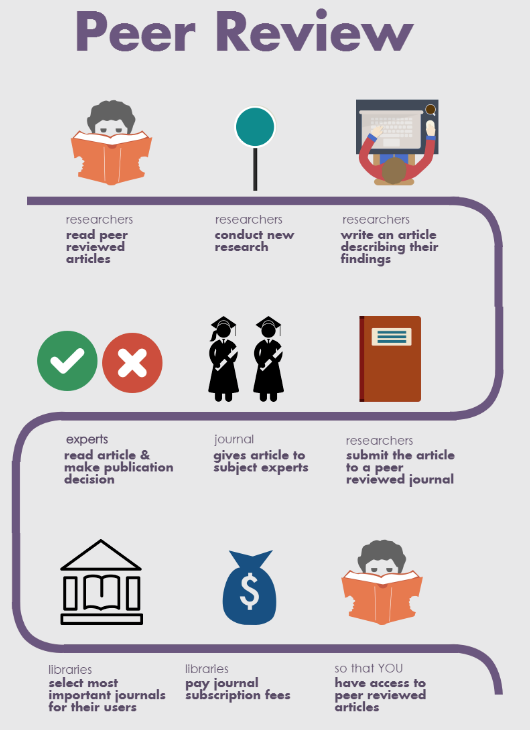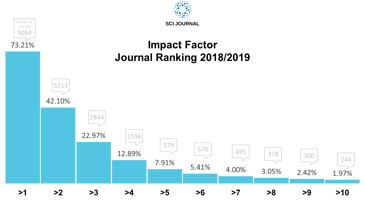The debate over Journal Impact Factor (IF) rages on, with no end in sight. Most scientists and...
Navigating scientific article submission: tips for instant success
When it comes to tenure evaluation, committee chairs often have an all-important metric: the list of every article a scientist has published, and the impact factors of the journal each article was published in. For better or for worse, the journal article is unquestionably the most important genre of scientific writing. Even for non-academics, article publishing is what enables one’s research to be seen by the world.
And it is a daunting process. We gathered tips from leading academics and peer-reviewed journals on every aspect of the journal publishing process, from assessing journals to preparing articles to navigating the hazier corridors of peer review. These tips will bolster any scientist’s ability to share what ultimately matters most—the groundbreaking discoveries they are responsible for in their respective niches.
Three tips for choosing the right journal
The choice of journal for your article is a key step that can determine the success or failure of your submission, as well as the impact of your science. Carefully choosing the right journal—i.e. making sure that the journal’s aim and scope match that of your paper, and evaluating the venue’s reputation and impact—can make all the difference.

- Respect your audience. Think about who will read your article if it is published in Journal X, and respect that they will be busy people. While it can be a bit much to extensively tailor your article, you should ensure that the reviewers and readers will be able to easily understand the scope, terms, and enjoy the content of the article. Certainly the paper’s reviewers will be thinking along these same lines. (Mark McDonnell and Steward Pickett, Oxford University Press)
- Recognize the editorial board. If you don’t recognize any of the names, it is a bad sign that you may be outside of your niche. (Ian Russell, Oxford University Press)
- Watch out for predatory journals. Especially when searching for an open access journal, one must be wary of journals that tout their open-access status in order to force expensive publishing fees on the author. (Andrew Schrock, Aloi Research) Read more about choosing open access journals here.
Five ways to conquer the writing process
It’s ultimately the research that matters the most. But how you present said research matters a great deal. Even though you are doing science, an article should nonetheless tell a great story with concise language and clear connection between all the ideas.
- Don’t bury the argument/discovery. Your overall argument should appear in direct language in the abstract and the very first paragraph of your paper. In fact, it should appear multiple times beyond that, tying all the research and pieces of evidence together. (Fiona Macauly, Journal of Latin American Studies)
- Use an outline. Identify the main and supporting points of the article first, and then order them into a structure that flows logically. You don’t need to complete this process in order—using post-it notes or a mind-map works just fine—but by the time you finish, you should have learned the right order for your ideas. (Mark McDonnell and Steward Pickett, Oxford University Press)
- Get a colleague to provide feedback. A poorly written paper is the most surefire way to fail—and another set of eyes is a good way to prevent that. (Brian Lucey, International Review of Financial Analysis)
- Use software to stop yourself from getting bogged down in citations and figures. There are plenty of options out there, such as Zotero and Endnote, which use formatting templates to automatically generate in-text citations and the references section. (Andrew Schrock, Aloi Research)
- Be transparent about the scope of your methodology and theory. You should define in clear terms the nature of your data collection and use of theory. Do not throw around loosely defined methodologies or theoretical terms. Instead, consistently apply the methodological and theoretical frameworks that accurately describe your study. (Fiona Macauly, Journal of Latin American Studies)

Three musts for the submission stage
Reviewing the submission guidelines and perfecting your cover letter and abstract will have a huge effect on how the editorial committee receives your work. The cover letter is how the editors get a feel for who you are and how they can assign reviewers who are the best fits for reviewing your manuscript. Meanwhile, the abstract should be clear, catchy, and most importantly, it should highlight the significance of your work.
- Provide the right context. Your submission should make it clear where your research sits in the scholarly landscape and which gaps in knowledge it addresses. (Jane Winters, Historical Research)
- Study the journal’s style and submission guides. Does the abstract have a word limit? Does your article fall under a specific category in the journal you’re submitting to? What information do you need to strip from the work to adhere to the anonymization rules? What are the guidelines for non-English words? And how does the journal expect sources to be cited? Having no gaps and being fully aligned with the journal’s style will give editors less reason to turn you down. (Wendy Belcher, Princeton University)
- Suggest reviewers carefully. While editors sometimes appreciate it when writers save them time by suggesting potential reviewers in niche areas, do not suggest a reviewer that is able to identify your work. (Andrew Schrock, Aloi Research)
Three knacks for dealing with feedback
Receiving feedback—especially feedback that seems unfair or unwarranted—can be an incredibly frustrating process. But the “R&R” (revise & resubmit) is the single most common response to a peer-reviewed submission, so it’s almost certain that you will go through this process. The key is not being discouraged, and not taking criticism too personally.
- Consider what exactly the R&R is asking you to do. Sometimes, the editors are asking for minor edits that you can easily accomplish. But others might ask for seemingly impossible tasks like collecting new data or incorporating an unfamiliar theory. Read the feedback carefully and consider the scope of the revision to decide how to proceed. (Andrew Schrock, Aloi Research)
- Don’t underestimate the response letter. You should describe how you’ve incorporated your reviewers’ feedback carefully in this response, showing that you’ve made the necessary changes to move towards acceptance in their journal. (Seyed Rezvani, Instituto Superior Tecnico)
- If you have a good justification, you can (politely) argue against certain changes. It is crucial to be calm and rational, but reviewers will be open to pushback, especially if it is clear that you have been open to the feedback received and accepted other parts of it. (Helen Ball, Journal of Human Lactation)

Two bonus tips
If you’ve chosen the right journal, written a clear and sound paper, ensured your submission matches the guidelines, and gone through your lumps in the review process—then the chances are that you’re well on your way to success. But in case all goes wrong, here are two extra tips from professionals on how to find your way to publication.
- Read rejection letters carefully. If your paper made it to peer review, it will have detailed comments about its strengths and weaknesses. When you address the issues cited in the rejection later, it may be possible to resubmit to the same journal. But if you do submit your paper to a new journal instead, make sure to rewrite your cover letter and recheck the submission guidelines: the worst possible way to announce yourself to a new journal is with a cover letter addressed to the wrong one. (Gail Sullivan, University of Connecticut)
- A good way to get published is by writing a review or response. Many publications publish more reviews than original papers, and some journals publish responses to papers in order to stimulate discussion. These are especially good ways for early-career researchers to get published. (Yujin Nagasawa, European Journal for Philosophy of Religion)
It never hurts to volunteer to review papers at journals, either. Doing so will enable you to improve your editing skills, learn what makes for a successful paper, and be a good citizen in your field of expertise. While there may be no such thing as instant success in academic publishing, there are plenty of ways to instantly improve your chances – and therefore make your unique contribution to the world of knowledge and discovery.

.jpg?width=50&name=DSC_0028%20(1).jpg)


